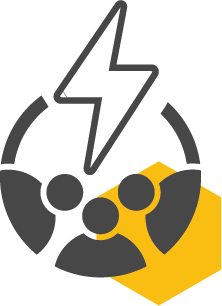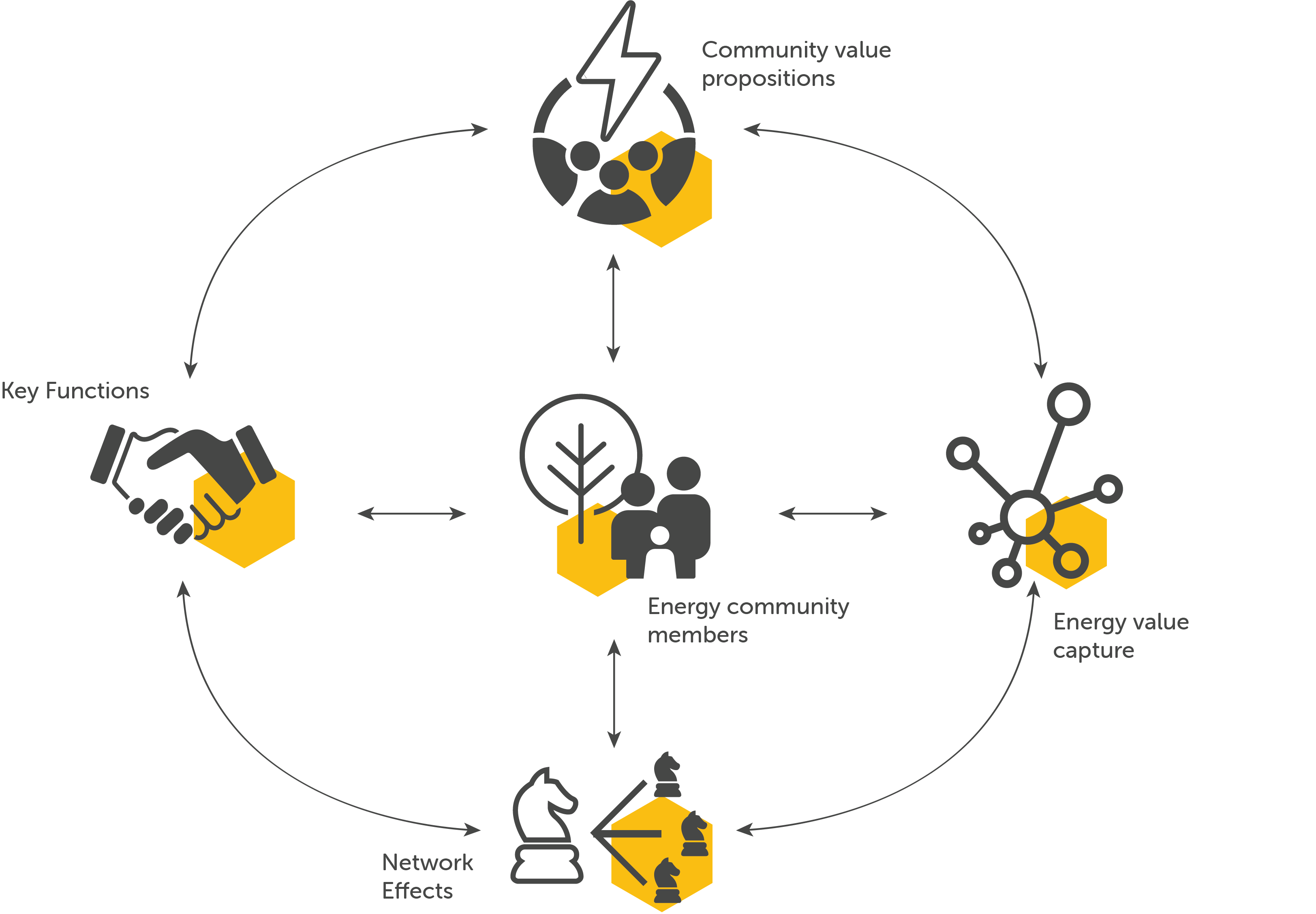
Community value proposition
Future business models in the energy sector revolve around multi-energy systems, use the potential of storage in heating and mobility demand and build on the power of communities. For stakeholders to successfully co-create future multi-energy management systems together with prosumers need business model innovation capabilities. The E-LAND business model innovation tool supports stakeholders to transform towards coordinators of low-carbon energy communities and provides a tool to manage business model innovation.
Business model innovation is often supported by a pattern-based approach. Patterns are key building blocks that can be combined to form a complete business model.
The E-LAND business model innovator provides a package of 25 business model patterns for energy communities that proved to be successful for early mover companies and projects. The tool provides implementation references to business models of energy communities, system operators and seasonal storage for inspiration. In a framework the pattern can be combined and tailored to the local context.
Download the card deck as PDF
– A modular approach: The E-LAND BMI tool allows you to configurate the business model for your energy community and tailor it to the local needs and context.
– 25 business model patterns: The tool provides a set of 25 patterns that have proven successful for other companies and community projects.
– Get inspiration from pioneers: Learn from the insights gained from the most innovative pilots project and companies.

The E-LAND BMI tool is a pattern-based approach to build a business model. The framework consists the five core areas: (a) community value proposition, (b) energy community members, (c) energy value capture, (d) key functions, and (e) network effects.
Community value proposition: The core value proposition is the driving force behind the energy community. For this the main motivator to develop the energy community. Typically, energy communities are initiated as a reaction to a challenging situation, such as insufficient grid connection to the main grid, high carbon emissions or unrealized opportunities.
Energy community members: The community engagement is the secret power of energy communities. It is necessary to clearly define who the involved prosumers and consumers are and which features they bring in.
Energy value capture: Energy communities strive to become financially self-sustainable or at least try to find avenues which can support them financially. Key element to achieve this is to find and incorporate monetization mechanisms to their business. This core area provides various mechanisms through which energy related benefits can be monetized.
Key functions: For an energy community to work key functions have to be fulfilled. The key functions define some core characteristics and tasks of the energy community.
Network effects: Network effects are vital for energy communities to reach full operational capacity and thrive in the long-term. By explicitly defining that central network effects that substantiate the business model a strategic focus can be located.
The E-LAND business model innovation tool is designed to be applied in a workshop process. The E-LAND team will guide you through a process to define the business model for your energy community in a set of workshops. The workshops will be structured along the 4 core stages of business model innovation:
Initiation: Understand the existing business model and ambitions
Ideation: Creatively adapt the patterns of the E-LAND business model innovation tool to local context.
Integration: Select the most promising pattern and configure and shape it to a complete business model for an energy community.
Implementation: Define the next steps to implementation.
(Click on each icon for more information of the core area and its patterns)
Miro Board
You can use our Miro template for organizing workshops using the patterns.
Card Deck (PDF)
Download the card deck as PDF